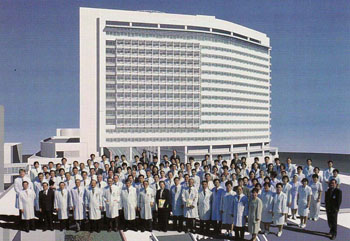Dual-Energy CT Scans for Simultaneous Evaluation of Krypton and Iodine Concentrations
By MedImaging International staff writers
Posted on 07 Jun 2016
The results of an experimental study aimed at evaluating the feasibility of using a simultaneous single dual-energy Computed Tomography (CT) scan to evaluate regional krypton and iodine concentrations have been released.Posted on 07 Jun 2016
The researchers enrolled 10 beagle dogs for the study that was approved by the institutional animal experimental committee. The researchers first made an airway obstruction model in the dogs, and then after a week they induced a pulmonary arterial occlusion. The researchers then performed three sessions of dual-energy CT (80% krypton CT, 80% mixed–contrast agent CT, and iodine CT). Next the researchers made krypton maps from krypton and mixed–contrast agent CT, and iodine maps from iodine and mixed–contrast agent CT. For each map observers measured overlaid Hounsfield units of diseased and contralateral segments, and compared the values using the Wilcoxon signed-rank test.

Image: The staff of the Yonsei University Severance Hospital (Photo courtesy of Yonsei University).
The results showed that overlay Hounsfield units of diseased segments were much lower in krypton maps of airway obstruction compared with those of contralateral segments in both mixed–contrast krypton and agent CT. On the other hand, for both segments the values of mixed–contrast agent CT were significantly more than those of krypton CT. Iodine maps of pulmonary arterial occlusion showed significantly lower values in diseased segments than in contralateral segments. There was no significant difference between mixed–contrast agent CT and iodine for both segments.
The researchers from the Department of Radiology at the Research Institute of Radiological Science, Severance Hospital, Yonsei University College of Medicine (Seoul, Korea) found that despite certain possible limitations, it is possible to analyze regional krypton and iodine concentrations simultaneously by using a single dual-energy CT scan.
Related Links:
Yonsei University College of Medicine














